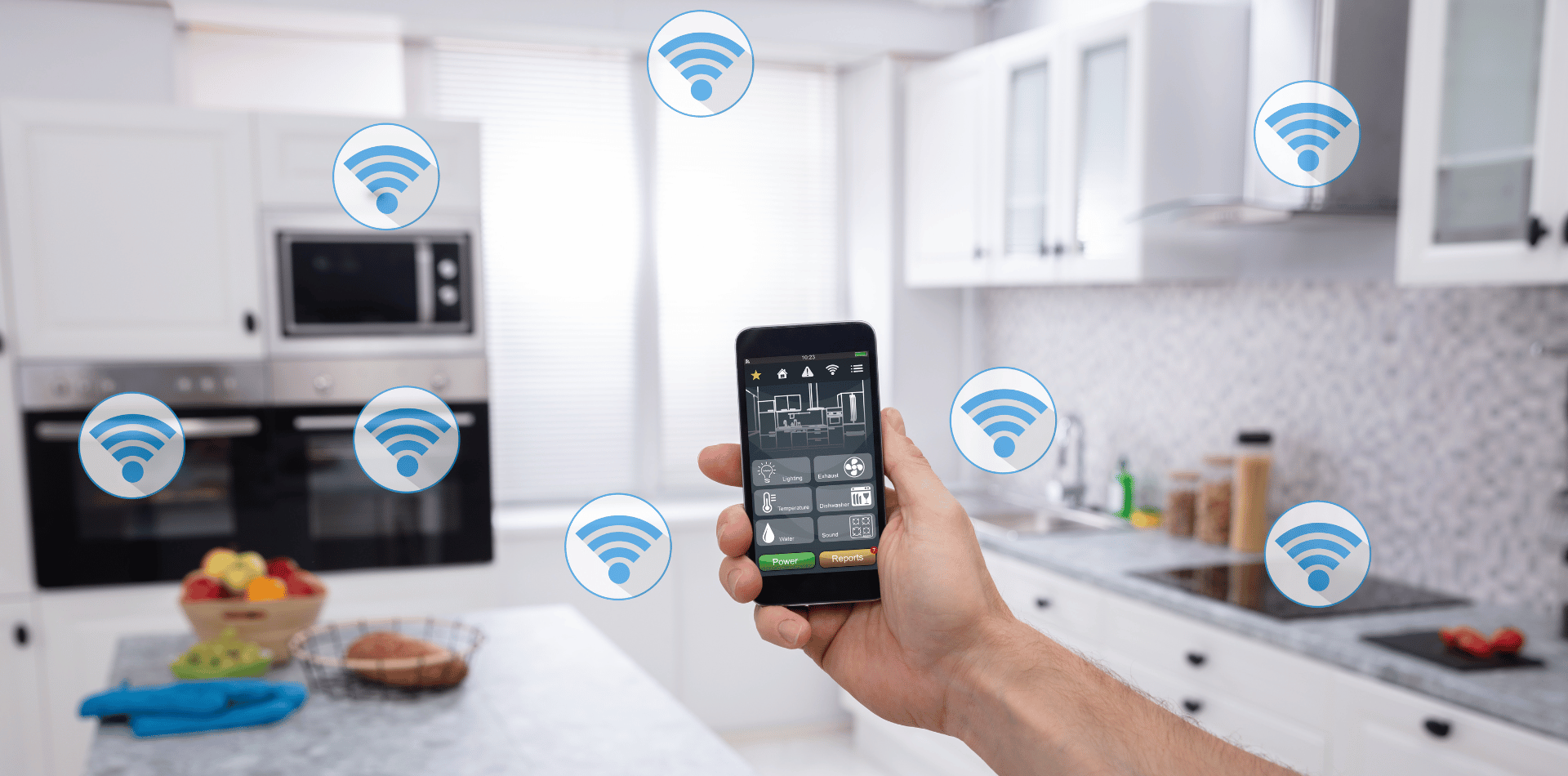The Smart Home Revolution: Technology and Innovation
Technology and Innovation.
The Smart Home Revolution.

In recent years, the concept of the smart home has transitioned from a futuristic idea to a tangible, everyday reality for millions of people around the world.
The smart home revolution is at the forefront of technology and innovation, transforming the way we live by integrating technology into our homes to make life more convenient, secure, and energy-efficient.
Let's have a closer look at the various facets of smart home technology, the latest innovations in the field, and how these advancements are reshaping our living spaces.
What is a Smart Home?
A smart home represents the evolution of residential living, leveraging technology to transform the way we interact with our living spaces.
This transformation is not just about automation but also about creating an ecosystem where devices are interconnected, intelligent, and responsive to the homeowner's needs and preferences.
At the core of a smart home is the concept of the Internet of Things (IoT), which allows objects and devices to send and receive data over the internet.
Key Components of a Smart Home
Automation: The Backbone of the Smart Home
Automation stands as the core foundation of the smart home, transforming traditional homes into dynamic environments that anticipate and cater to the needs of their inhabitants.
This shift towards automation is not just about convenience; it's a comprehensive change in how we interact with our living spaces, making them more responsive, energy-efficient, and personalised.
Understanding Smart Home Automation
At its essence, smart home automation involves the use of various devices and systems to control different aspects of a home's environment with minimal human intervention. These automated tasks are usually triggered by a set of predefined rules or conditions, known as "if this, then that" (IFTTT) logic. For instance, "if the temperature drops below 25 degrees Celcius, then turn on the heating system."
Automation relies heavily on sensors and devices communicating with each other. Sensors play a crucial role by providing real-time data about the environment, such as temperature, light levels, or motion. This data triggers actions from connected devices, enabling them to respond appropriately to changes without needing manual commands.
Core Elements of Smart Home Automation
- Sensors: These are the eyes and ears of a smart home automation system, detecting changes in the environment such as movement, temperature variations, light intensity, and more. They are crucial for gathering data that informs the system's actions.
- Actuators: Devices like smart locks, thermostats, light bulbs, and appliances that perform actions in response to automation rules or commands. For example, a smart lock may automatically engage at a certain time in the evening.
- Controllers: The brain behind the automation, which can be a centralised hub or distributed software running on smartphones and tablets. Controllers interpret data from sensors, apply predefined logic, and send commands to actuators.
- Connectivity: A robust network infrastructure, using technologies like Wi-Fi, Bluetooth, Zigbee, or Z-Wave, connects all components of the automation system, facilitating seamless communication and coordination.
Examples of Smart Home Automation
- Climate Control: Smart thermostats represent one of the most popular and impactful aspects of home automation. They go beyond simple temperature adjustments, learning the household's routines and preferences to optimise heating and cooling schedules, leading to enhanced comfort and energy savings. For example, a thermostat can lower the heating when the house is empty and warm it up right before residents return.
- Lighting Solutions: Automated lighting systems can adjust the brightness and colour temperature of lights throughout the day or turn lights on and off as people move from room to room. This not only improves the ambiance but also contributes to energy conservation by ensuring lights aren't left on when they're not needed.
- Security Systems: Automation extends to home security, where smart locks, cameras, and alarm systems enhance safety with features like automatic locking at preset times, real-time alerts to homeowners' smartphones, and the ability to grant or deny access remotely.
- Entertainment Systems: Even home entertainment has seen the influence of automation. Systems can now suggest content based on viewing history, set the perfect lighting for movie watching, or integrate with other home systems for alerts or reminders without disrupting the viewing experience.
How Smart Home Automation Works
- Data Collection: Sensors throughout the home constantly monitor for changes in their environment and send this data to the controller.
- Data Interpretation: The controller analyzes the incoming data against the predefined rules or patterns. For example, a motion sensor might trigger a rule that if movement is detected in the living room after sunset, the lights should turn on.
- Action Execution: Once a rule is triggered, the controller sends commands to the relevant actuators (like smart bulbs or thermostats) to carry out the specified action.
The Benefits of Automation in Smart Homes
The benefits of smart home automation are vast and varied:
- Efficiency and Energy Savings: By optimising the operation of heating, cooling, and lighting, smart homes can significantly reduce energy consumption and, consequently, utility bills.
- Convenience: Automation brings unparalleled convenience, allowing residents to manage their home environments effortlessly, even remotely.
- Security: Enhanced security features keep homes safer, providing peace of mind to homeowners whether they are at home or away.
- Personalisation: Smart homes can adapt to individual preferences and routines, creating a living space that is truly tailored to its occupants.
- Accessibility: Automation makes homes more accessible, particularly for individuals with disabilities or mobility issues, by enabling voice control, remote access, and other features that reduce the need for physical interaction.
- Enhanced Comfort: Adjust environmental settings automatically based on preferences or conditions, like warming the house before you wake up.
Future Directions
The potential of smart homes extends beyond what we currently understand. Future developments could include more predictive technologies that learn from your habits and preferences to automatically adjust your environment. For example, a smart home might anticipate your arrival from work and adjust the temperature, lighting, and even start preheating the oven for dinner.
As artificial intelligence (AI) and machine learning (ML) technologies advance, smart homes will become even more intuitive and capable of offering personalised experiences.
Integration with electric vehicles, solar panels, and other sustainable technologies could also make smart homes central to eco-friendly living.
Challenges and Considerations
- Security and Privacy: As homes become smarter, they also become more attractive targets for cyberattacks. Ensuring the security and privacy of personal data is a significant challenge that manufacturers and homeowners must address.
- Compatibility and Interoperability: With a vast array of smart home devices on the market, ensuring that they can work together seamlessly is crucial for user experience.
- Cost: While prices have been decreasing, setting up a fully integrated smart home can still be a significant investment.
The Role of IFTTT in Automation
IFTTT (If This, Then That) logic is a simple yet powerful principle behind many automation tasks, allowing even complex systems to operate based on straightforward conditional statements. By creating chains of these conditional commands, homeowners can set up customised automation tasks that suit their specific needs and lifestyles, from simple tasks like turning on lights at dusk to more complex scenarios involving multiple triggers and actions.
The Future of Home Automation
The future of smart home automation lies in further integration of artificial intelligence (AI) and machine learning (ML), enabling systems to not only react to predefined conditions but also anticipate needs and adjust settings proactively. As devices become smarter and more interconnected, the potential for creating truly intuitive and adaptive living spaces increases, offering unprecedented levels of personalisation and convenience.
Despite the benefits, challenges such as ensuring data privacy, system security, and interoperability between different devices and manufacturers remain critical considerations. As technology advances, overcoming these challenges will be essential for the continued adoption and evolution of smart home automation.
As technology continues to evolve, the scope of home automation will expand even further. We can expect more intuitive interfaces, deeper integration between devices, and even smarter systems that anticipate needs rather than just responding to them. The future promises a home that not only simplifies life but also adapts to changes in lifestyle, preferences, and even the environment, offering a seamless, personalised living experience.
Automation is not just a feature of the smart home; it is the very essence that defines its intelligence and utility.
As we move forward, the continued innovation in automation technology is set to redefine what it means to live in a smart, connected home.

You might also like





